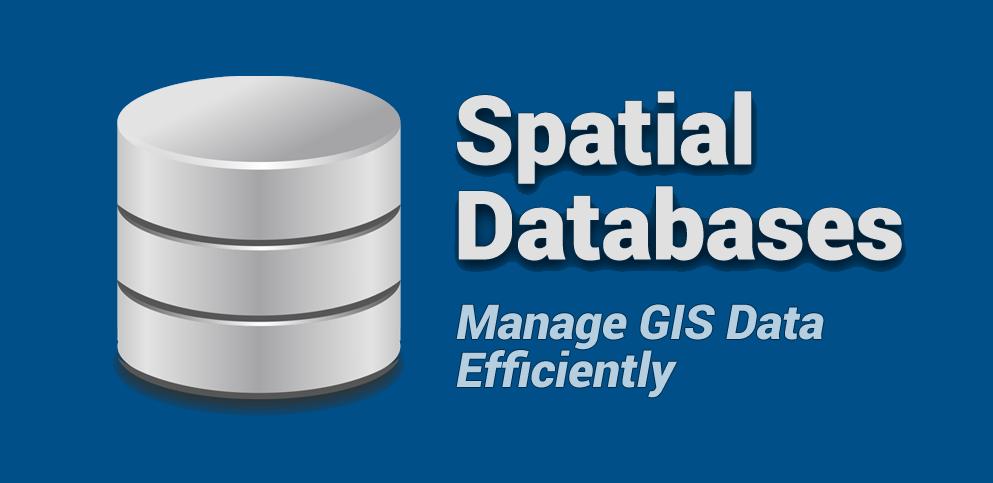Featuresofspatialdatabase
1.Theamountofdataishuge.
Spatialdatabasesareorientedtogeographyandrelatedobjects,andintheobjectiveworldtheyareofteninvolvedintheearth'ssurfaceinformation,geologicalinformation,atmosphericinformation,etc.andtheircomplexphenomenaandinformation,soThedatadescribingthisinformationhasalargecapacity,usuallyreachingthegigabytelevel.
2.Highlyaccessible.
Spatialinformationsystemsrequirepowerfulinformationretrievalandanalysiscapabilities,whicharebasedonspatialdatabasesandrequireefficientaccesstolargeamountsofdata.
3.Thespatialdatamodeliscomplex
Thespatialdatabasedoesnotstoredataofasinglenature,butcoversalmostalldatatypesrelatedtogeography.ThesedatatypescanbedividedintoType3:
(1)Attributedata:Basicallyconsistentwithgeneraldatabases,itismainlyusedtodescribevariousattributesofgeosciencephenomena,generallyincludingnumbers,text,anddatetypes.
(2)Graphicimagedata:Unlikegeneraldatabases,alargeamountofdatainaspatialdatabasesystemisdescribedbymeansofgraphicimages.
(3)Spatialrelationaldata:storageoftopologicalrelationaldata,usuallycombinedwithgraphicaldata.
4.Jointmanagementofattributedataandspatialdata.
5.Theattributedataandspatialdataofspatialentitiescanchangeaccordinglyovertime.
6.Thelengthofthedataitemofspatialdataisvariable,containsoneormoreobjects,andrequiresnestedrecords.
7.Onefeaturetypecorrespondstooneattributedatatablefile.Multiplefeaturetypesshareoneattributedatatablefile.
8.Ithasspatialmulti-scaleandtimemulti-scale.
9.Widerangeofapplications.
Designofspatialdatabase
Designofspatialdatabase
Databaseshavevariousorganizationsduetodifferentapplicationrequirementsform.Thedesignofthedatabaseistodeterminetheoptimaldatamodel,processingmode,storagestructure,andaccessmethodinagivenapplicationenvironmentaccordingtodifferentapplicationpurposesanduserrequirements,andestablishinformationbetweengeographicalentitiesthatcanreflecttherealworld.TheconnectionbetweenthemsatisfiesuserrequirementsandcanbeacceptedbyacertainDBMS.Atthesametime,itcanachievesystemgoalsandeffectivelyaccessandmanagedatadatabases.Inshort,databasedesignistheprocessofabstractingapplicationdataexistinginacertainrangeintherealworldintoaspecificstructureofadatabase.
Thedesignofaspatialdatabasereferstotheentireprocessofestablishingaspatialdatabaseonthebasisofadatabasemanagementsystem.Itmainlyincludesthreeparts:requirementsanalysis,structuredesign,anddatalayerdesign.
1.Demandanalysis
Requirementanalysisisthebasisforthedesignandestablishmentoftheentirespatialdatabase.Themaintasksareasfollows:
1)Investigateuserneeds:
Understandusercharacteristicsandrequirements,andobtainaconsistentviewoftheneedsofdesignersandusers.
2)Collectionandanalysisofdemanddata:
Includinginformationdemand(informationcontent,characteristics,datatobestored),informationprocessingrequirements(Suchasresponsetime),integrityandsafetyrequirements,etc.
3)Prepareuserrequirementsspecification:

Includerequirementsanalysisgoals,tasks,specificrequirementsdescription,systemfunctionsandperformance,operatingenvironment,etc.,yesThefinalresultoftheneedsanalysis.
Requirementanalysisisahighlytechnicalwork,whichshouldbecompletedbyexperiencedprofessionalandtechnicalpersonnel.Atthesametime,theactiveparticipationofusersisalsoveryimportant.
CompletetherequirementsanalysisstageSelectionofdatasourcesandevaluationofvariousdatasets
2Structuraldesign
referstospatialdatastructuredesign,theresultisareasonablespatialdatamodel,whichisthekeytospatialdatabasedesign.Themorethespatialdatamodelcanreflecttherealworld,thebettertheapplicationsystemgeneratedonthisbasiscanmeetthedataprocessingrequirementsofusers.
Theessenceofspatialdatabasedesignistheprocessofexpressinggeospatialentitiesinadatabasesysteminacertainorganizationalform,whichistheproblemofmodelingspatialentitiesingeographicinformationsystems.
1)Conceptualdesign
Conceptualdesignisthroughtheunderstandingandabstractionoftheintricaterealworld,andfinallyformsthespatialdatabasesystemanditsapplicationsystem.Model.
Specifically,itanalyzesandorganizestheinformationanddatacollectedinthedemandanalysisstage,determinesgeographicentities,attributesandtheirconnections,andmergesthepartialviewsofeachuserintoageneralglobalview.Formaconceptualmodelthatisindependentofthecomputerandreflectstheuser'spointofview.TheconceptualmodelhasnothingtodowiththespecificDBMS,thestructureisstable,anditcanbetterreflecttheinformationneedsofusers.
ThemostpowerfultoolthatrepresentstheconceptualmodelistheE-Rmodel,thatis,theentity-relationmodel,whichincludesthreebasiccomponents:entity,connection,andattribute.Itisusedtodescribetherealgeographicworld,withoutconsideringtheinformationstoragestructure,accesspathandaccessefficiency,andothercomputer-relatedissues.Itisclosertotherealgeographicworldthanthegeneraldatamodel,anditisintuitive,natural,andrichinsemantics.Characteristics,hasbeenwidelyusedingeographicdatabasedesign.
2)Logicdesign
Onthebasisoftheconceptualdesign,theprocessofconvertingtheconceptualmodelintoadatamodelsupportedbythespecificDBMSaccordingtodifferentconversionrules,Thatis,toderivethelogicalstructure(orexternalmode)ofthegeographicdatabasethatcanbeprocessedbyaspecificDBMS,includingdeterminingdataitems,records,andrelationsbetweenrecords,security,integrity,andconsistencyconstraints.Whetherthederivedlogicalstructureisconsistentwiththeconceptualmodelandwhetheritcanmeetuserrequirements,itsfunctionandperformancemustbeevaluatedandoptimized.
ThemainprocessoftransformingfromE-Rmodeltorelationalmodelis:
①Determinethemainkeywordsofeachentity;
②DetermineandwriteouttheentityThedatarelationshipexpressionbetweeninternalattributes,thatis,acertaindataitemdeterminesanotherdataitem;
③Theentityinthedatarelationshipexpressionaftertheeliminationofredundancyisusedasthecorrespondingprimarykeyword
p>
④Formanewrelationshipaccordingto②and③.
⑤Aftercompletingtheconversion,analyze,evaluateandoptimize.
3)Physicaldesign
Physicaldesignreferstotheeffectiverealizationofthelogicalstructureofthespatialdatabaseonphysicalstorage,andthedeterminationofthephysicalStoragestructure,theresultistoexportthestoragemode(internalmode)ofthegeodatabase.Themaincontentincludesdeterminingtherecordstorageformat,selectingthefilestoragestructure,determiningtheaccesspath,andallocatingstoragespace.
Thequalityofthephysicaldesignwillhaveagreatimpactontheperformanceofthegeographicdatabase.Agoodphysicalstoragestructuremustmeettwoconditions:oneisthatthegeographicdataoccupiesasmallstoragespace;theotheristhedatabaseTheoperationhasthehighestpossibleprocessingspeed.Aftercompletingthephysicaldesign,performperformanceanalysisandtesting.
Thephysicalrepresentationofdataisdividedintotwocategories:numericdataandcharacterdata.Numericaldatacanbeexpressedindecimalorbinaryform.Usuallythebinaryformatoccupieslessstoragespace.Characterdatacanbeexpressedintheformofcharacterstrings,andsometimesthestorageofcodevaluescanbeusedinsteadofthestorageofcharacterstrings.Inordertosavestoragespace,datacompressiontechnologyisoftenused.
Thephysicaldesignislargelyrelatedtotheselecteddatabasemanagementsystem.Inthedesign,thefunctionsprovidedbythesystemshouldbeselectedaccordingtotheneeds.
4)Datalayerdesign
MostGISdividedataintodifferentdatalayersfororganizationaccordingtologicaltypes.ThedatalayerisanimportantconceptinGIS.GISdatacanbedividedintovariouslogicaldatalayersorprofessionaldatalayersaccordingtothelogicalrelationshiporprofessionalattributesofspatialdata,whichissimilartothesuperpositionofpicturesinprinciple.Forexample,topographicmapdatacanbestoredseparatelyinlayerssuchaslandforms,watersystems,roads,vegetation,controlpoints,andresidentialareas.Thedataofthetopographicmapissynthesizedbysuperimposingthelayers.Whenperformingspatialanalysis,dataprocessing,andgraphicdisplay,oftenonlyafewcorrespondinglayersofdataareneeded.
Thedesignofthedatalayerisgenerallycarriedoutinaccordancewiththeprofessionalcontentandtypeofthedata.Thetypeofprofessionalcontentofdataisusuallythemainbasisfordatastratification,andtherelationshipbetweendatashouldalsobeconsidered.Itisnecessarytoconsiderthesharedboundaryoftwotypesofobjects(theoverlapofroadsandadministrativeboundaries,andtheoverlapofriversandlandboundaries),etc.Therelationshipbetweenthesedatashouldbereflectedinthedatahierarchicaldesign.
Becausedifferenttypesofdatahavethesameapplicationfunction,theyareoftenusedatthesametimeduringanalysisandapplication.Therefore,suchrequirementsshouldbereflectedinthedesign,andthesedatacanbeusedasalayer.Forexample,polygonallakes,reservoirs,linearrivers,ditches,point-shapedwells,springs,etc.,areoftenusedintheapplicationofGISatthesametime,sotheycanbeusedasadatalayer.
5)Datadictionarydesign
Datadictionaryisusedtodescribetheoverallstructure,datacontentanddefinitionofthedatabase.Thecontentofthedatadictionaryincludes:1)Theoverallorganizationalstructureofthedatabase,theoveralldesignframeworkofthedatabase.2)Thedefinitionofthedetailedcontentandstructureofeachdatalayer,andthedefinitionofdatanaming.3)Metadata(datarelatedtodataisadescriptionofthecontent,qualityconditionsandoperationprocessofadataset).
